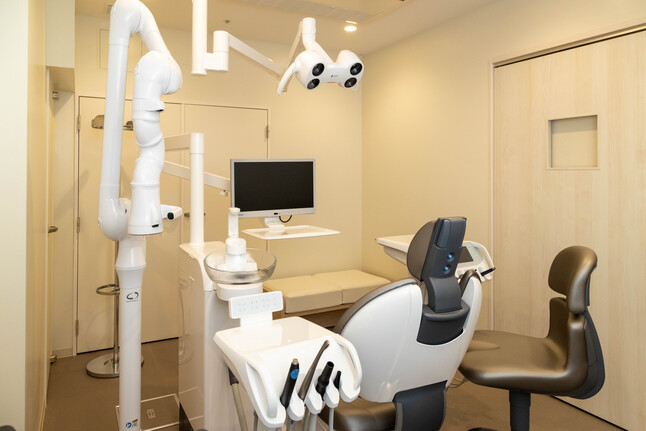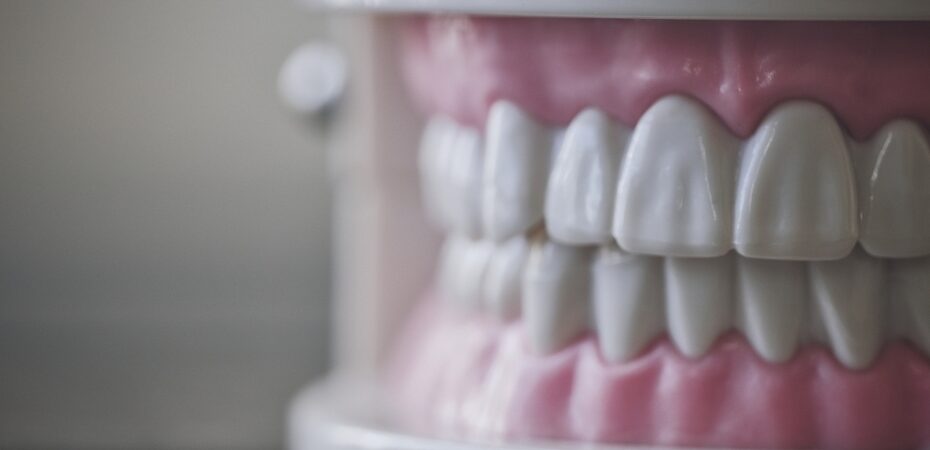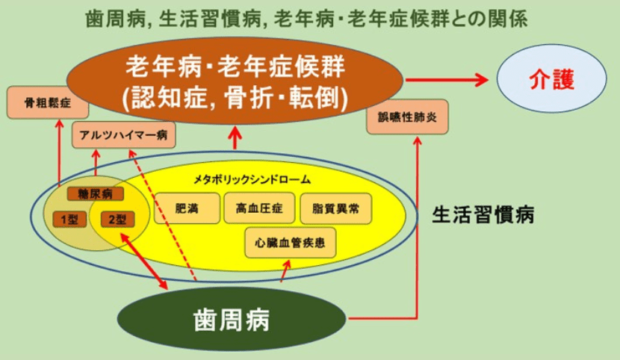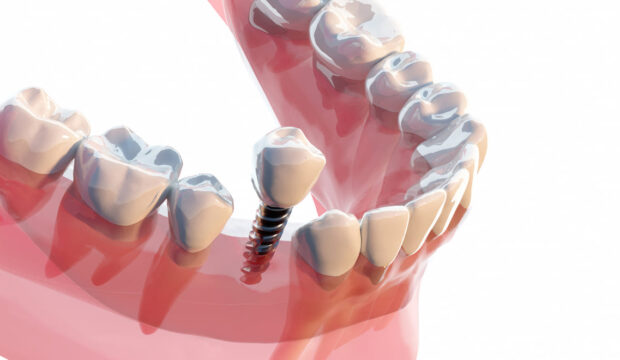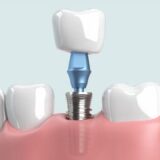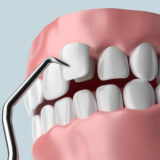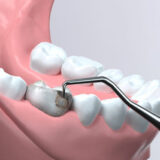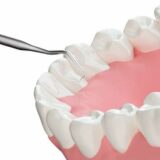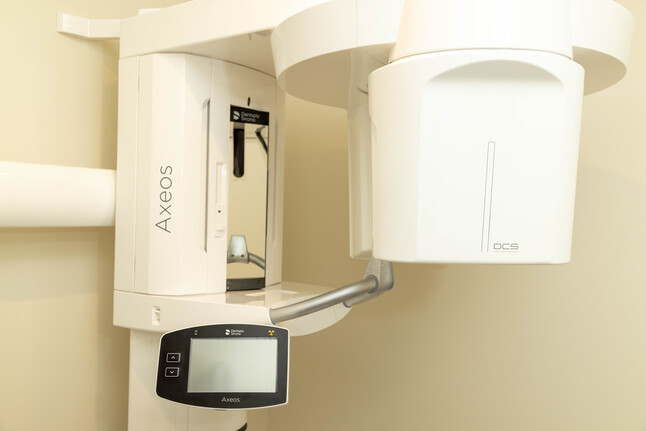Endodontic Treatment
Overview of Endodontic Treatment Endodontic treatment refers to the therapy of the dental pulp, which is located at the center of the tooth.
Even if a tooth’s nerve (dental pulp) becomes infected by bacteria, causing inflammation and death of the pulp, endodontic treatment can be performed to potentially save the tooth.
The key point in endodontic treatment is to eliminate even the smallest amounts of bacteria.
Purpose of Endodontic Treatment
- To preserve your natural teeth as much as possible.
Types of Endodontic Treatment
There are two main types of endodontic treatment.
Treatment to preserve the nerve and treatment to avoid tooth extraction.
Both are crucial methods for preserving natural teeth.
Pulpal Preservation Treatment
Pulpal preservation treatment involves preserving the dental nerve.
It is performed when tooth decay is
shallow or when the dental nerve is still healthy.
Root Canal Treatment
Root canal treatment involves removing the dental nerve.
It is performed when tooth decay is
deep or when the dental nerve is dead.
Pulpal Preservation Treatment
A treatment to preserve the nerve as much as possible
Pulpal preservation treatment refers to preserving the dental nerve without performing pulpectomy (removing the nerve) when tooth decay reaches the nerve.
Removing the nerve can reduce a tooth’s lifespan and make it fragile, resulting in various drawbacks.
Thus, pulp preservation treatment aims to avoid nerve removal whenever possible.
Depending on the extent of tooth decay, pulpal preservation treatment is classified into “indirect pulp capping,” “direct pulp capping,” “partial pulpotomy,” and “complete pulpotomy.”
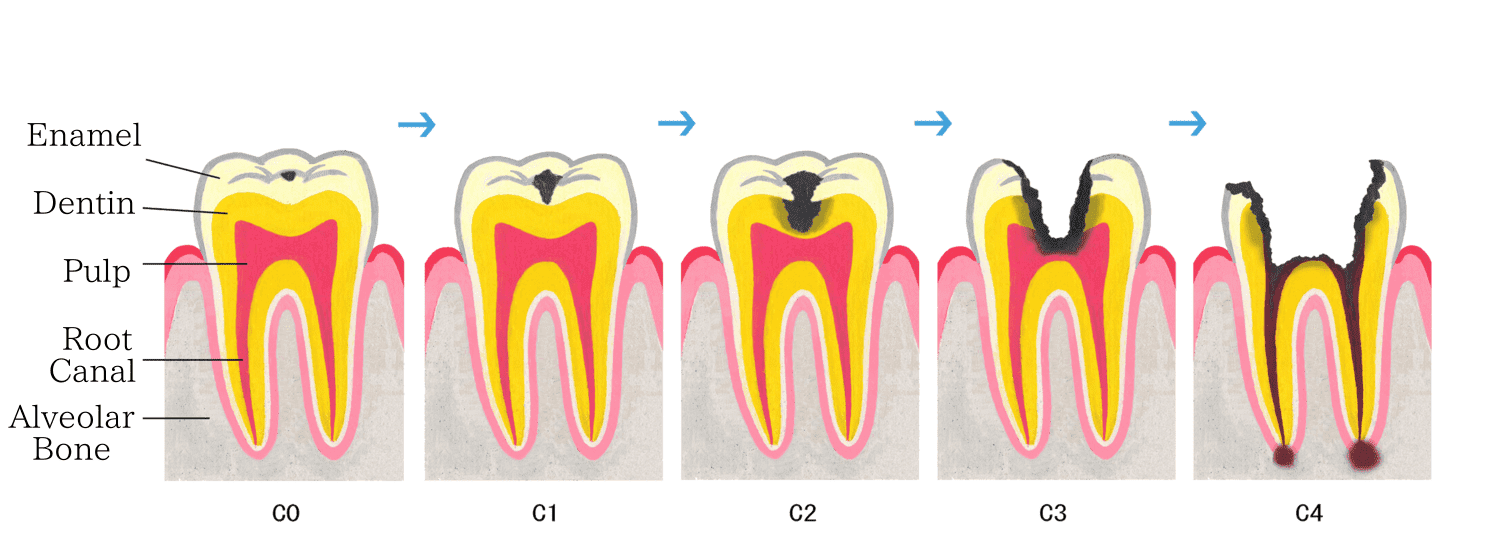
The dental nerve is present in the “dental pulp.”
Dental pulp is the central part of the tooth that contains the nerve, blood vessels, and lymphatic vessels.
It plays crucial roles such as “sensing stimuli,” “delivering nutrients to the tooth,” and “preventing tooth decay.”
Removing the dental pulp can lead to various issues:
The tooth becomes fragile and is prone to cracking or chipping.
Immediate chipping or breaking of the tooth.
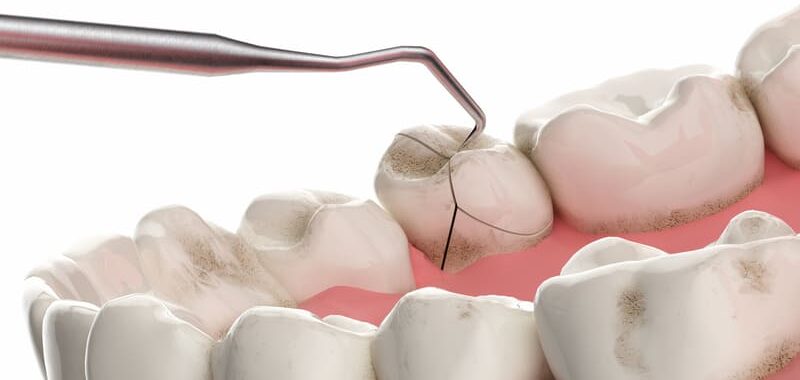

Problems Caused by Removing the Dental Pulp
We strive to preserve the dental pulp as much as possible.
- The tooth get cracked or chipped
- Unnotice about the tooth decay
- Discoloration of the tooth may occur.
Depending on the progress of the caries, it may not be adapted.
Indications for Pulpal Preservation Treatment:
- Those who want to avoid weakening their teeth.
- Those who want to avoid nerve removal.
- Those who want to avoid tooth reduction.
Root Canal Treatment
A treatment to avoid tooth extraction
Root canal treatment refers to the treatment of the tooth root.
Even if tooth decay has reached the dental pulp, root canal treatment can be performed to preserve the tooth rather than extracting it.
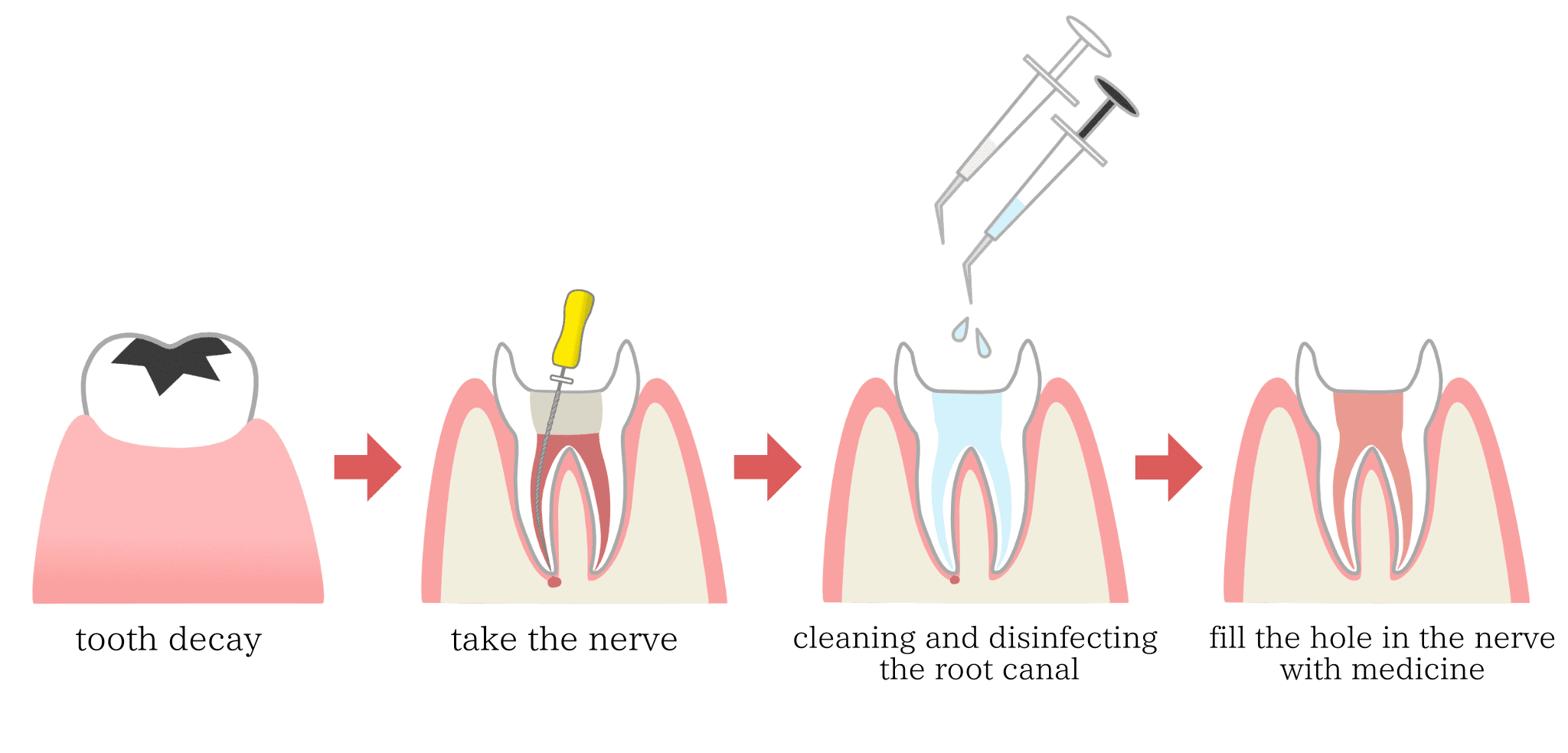
The procedure involves removing infected nerves and blood vessels from the root canal, cleaning and disinfecting the canal,
After all sealing it with medication.
The treatment requires precision, including the removal of bacteria and intricate root canal work.Root canal treatment is more challenging than treating cavities.
We recommend root canal treatment by experienced dentists or at dental clinics equipped with the necessary facilities.
In our clinic, experienced doctors from university hospitals specialized in root canal treatment provide comprehensive treatment using state-of-the-art equipment.

Cases Requiring Root Canal Treatment
Starting treatment early in any case is crucial.
Pulpitis (Irreversible Pulpitis)
Advanced tooth decay reaches the dental pulp. Causing sensitivity to hot and cold substances and occasional spontaneous pain.
Pulpal Necrosis
An aggravated condition of pulpitis where the dental pulp becomes nonfunctional, resulting in the absence of pain or sensation. Discoloration of the tooth may occur.
Apical Periodontitis
An advanced stage of infection originating from an infected root canal. Severe pain and gum abscess may occur. The need for tooth extraction increases.
Steps of Root Canal Treatment:
Pulp Removal
Remove the dental nerve.
Canal Enlargement and Shaping
Remove infected materials and enlarge the root canal.
Root Canal Filling
Fill the clean root canal with a sterile material.
Restoration
Restore the tooth with a crown.






